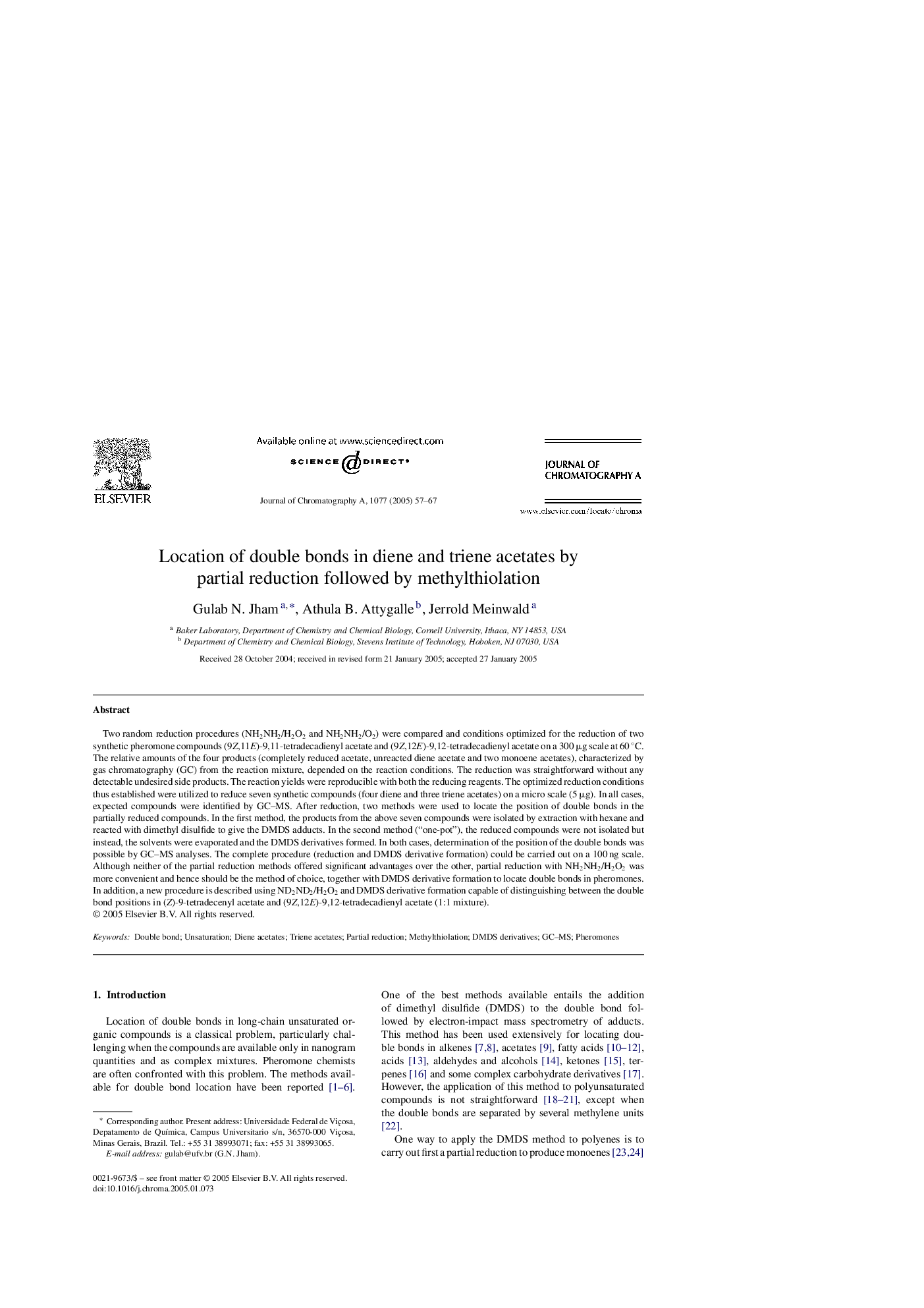| Article ID | Journal | Published Year | Pages | File Type |
|---|---|---|---|---|
| 10547977 | Journal of Chromatography A | 2005 | 11 Pages |
Abstract
Two random reduction procedures (NH2NH2/H2O2 and NH2NH2/O2) were compared and conditions optimized for the reduction of two synthetic pheromone compounds (9Z,11E)-9,11-tetradecadienyl acetate and (9Z,12E)-9,12-tetradecadienyl acetate on a 300 μg scale at 60 °C. The relative amounts of the four products (completely reduced acetate, unreacted diene acetate and two monoene acetates), characterized by gas chromatography (GC) from the reaction mixture, depended on the reaction conditions. The reduction was straightforward without any detectable undesired side products. The reaction yields were reproducible with both the reducing reagents. The optimized reduction conditions thus established were utilized to reduce seven synthetic compounds (four diene and three triene acetates) on a micro scale (5 μg). In all cases, expected compounds were identified by GC-MS. After reduction, two methods were used to locate the position of double bonds in the partially reduced compounds. In the first method, the products from the above seven compounds were isolated by extraction with hexane and reacted with dimethyl disulfide to give the DMDS adducts. In the second method (“one-pot”), the reduced compounds were not isolated but instead, the solvents were evaporated and the DMDS derivatives formed. In both cases, determination of the position of the double bonds was possible by GC-MS analyses. The complete procedure (reduction and DMDS derivative formation) could be carried out on a 100 ng scale. Although neither of the partial reduction methods offered significant advantages over the other, partial reduction with NH2NH2/H2O2 was more convenient and hence should be the method of choice, together with DMDS derivative formation to locate double bonds in pheromones. In addition, a new procedure is described using ND2ND2/H2O2 and DMDS derivative formation capable of distinguishing between the double bond positions in (Z)-9-tetradecenyl acetate and (9Z,12E)-9,12-tetradecadienyl acetate (1:1 mixture).
Related Topics
Physical Sciences and Engineering
Chemistry
Analytical Chemistry
Authors
Gulab N. Jham, Athula B. Attygalle, Jerrold Meinwald,
